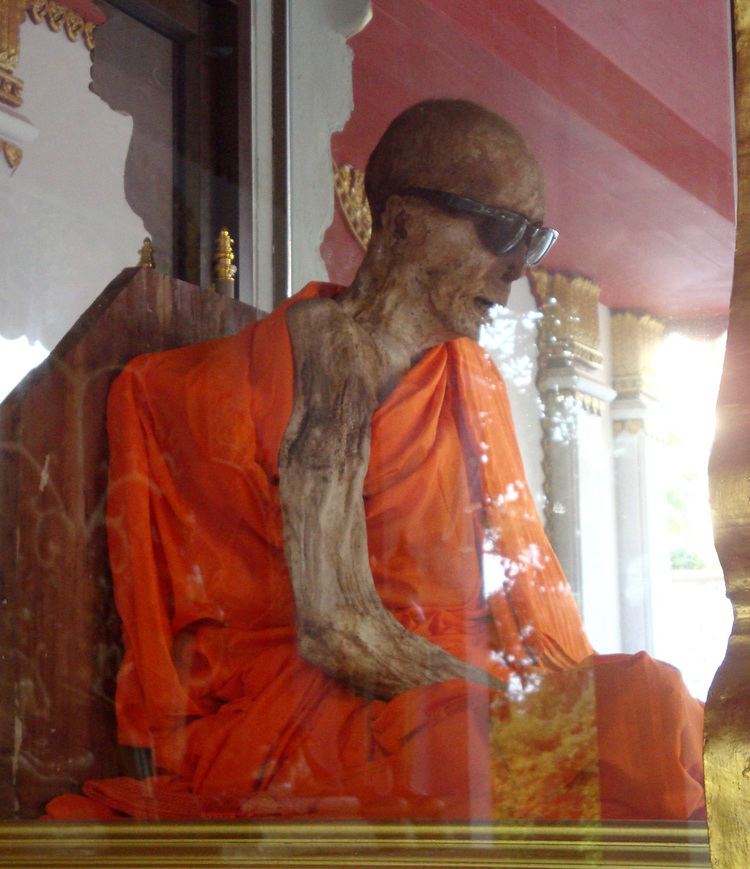 | ||
Buddhist mummies, also called flesh body bodhisattvas, full body sariras, or living buddhas (Sokushinbutsu) refer to the bodies of Buddhist monks and nuns that remain incorrupt, without any traces of deliberate mummification. These are venerated by some Buddhists who believe they successfully were able to mortify their flesh to death. The practise to purposely make undecomposed bodies is seen as controversial and contradictory to the Buddhist belief in impermanence. Many were destroyed or lost in history. The Hungarian Natural History Museum recently found a Buddhist mummy inside a statue of Buddha.
Contents
Causes
Some were naturally formed. Some Mahayana buddhist monks left instructions to be followed after their deaths, which often included having them buried sitting in a lotus posture, put into a vessel with drying agents (such as coal, wood, paper, or lime) and surrounded by bricks, to be exhumed later, usually after three years. The preserved bodies would then be decorated with paint and adorned with gold. It is a common method in China. Some covered the bodies with clay or salt. According to Victor H. Mair in the Discovery Channel series The Mystery of the Tibetan Mummy, the self-mummification of a Tibetan monk, who died ca. 1475 and whose body was retrieved relatively incorrupt in the 1990s, was achieved by the sophisticated practices of meditation, coupled with prolonged starvation and slow self-suffocation using a special belt that connected the neck with his knees in a lotus position. The mummies of monks (Sokushinbutsu) in Japan practised nyūjō (入定), which caused their own death by adhering to a wood eating diet made up of salt, nuts, seeds, roots, pine bark, and urushi tea. They were then buried alive in a pine-wood box full of salt connected by a tube for air and would ring a bell signaling they were alive. When the bell stopped ringing the air tube was removed. Japan banned unburying in 1879, and assisted suicide—including religious suicide—is now illegal.
My affair will become a big one, not only get known by the Xianghe county, but by the whole China and eventually by the whole world.(我的事大着呢,不但让香河县知道,还要让全中国知道,最后让全世界都知道。)
My original life span should have been 81 years, but I leave my fortune and life of the last 20 years to all suffering lives. After I leave this world for Sukhavati, don't burn my body, or bury it. Leave my body quietly, it would naturally achieve an incorruptible body of Buddhism. It would be a miracle of mankind and treasure of Buddhism.(本来我的寿命是81岁,我把后20年的福寿留给一切苦难的众生。我往生后,不要把我的身体火化,也不要安葬。给我一处静地,让我这个身体继续养着。自然就会成为佛门的金刚不坏之肉身舍利,也称为“紫磨真金色身”,是人类的奇迹,是佛门的珍宝。)
Theravada
Some names lost or unknown.
Mahayana
Some names lost, Taoists or Way of Former Heaven religion.
Vajrayana
Some names are lost
